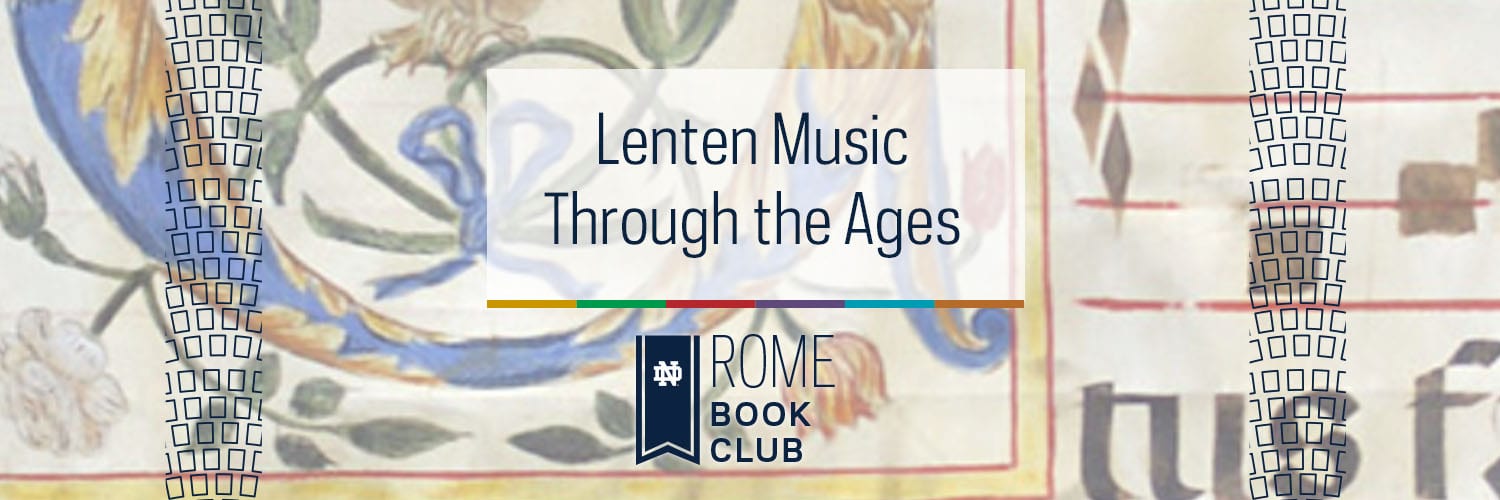From One Voice to Many: Renaissance Polyphony

During the early Renaissance, musicians started to experiment with singing different musical lines at the same time. You might even say that boredom was the catalyst for polyphony! The earliest forms of polyphony are the singing of Gregorian melodies homophonically — two lines sung at an interval of perfect 4th or 5th. By the end of the 16th century, what began as basic harmony developed into some of the most lush vocal music ever created.
The Order of Mass and Renaissance Polyphony
Presented by J.J. Wright
In this video, we’ll explore the ordinary, or Order of Mass, and how polyphony developed into a full blown musical style in the 14th-16th centuries.
Article: The Order of Mass and Renaissance Polyphony
Presented by J.J. Wright
Renaissance Polyphony is one of the major singing traditions of the Catholic Church from about the 14th-16th centuries. In order to contextualize our continued journey through the history of sacred music, let’s begin by talking about the Order of Mass. Somewhere in the back of our minds, we can probably recall what the order of Mass is, but let’s take a moment to lay it out.
Within the order of Mass, we have two main ideas:
- Ordinary – The Ordinary is called ordinary, because it doesn’t really change. These are the parts of the Mass that are the same each week – kyrie, gloria, alleluia, creed, the holy holy, agnus dei, etc.
- Propers – The Propers are called proper because they are assigned to specific days – Sundays and Feast Days have special prayers that go along with them. These are called introit, gradual, offertory, and communion.
This order of Mass has been pretty similar from the Medieval Mass to the present and is important in this conversation because these prayers are where we can observe the development of sacred music over the course of many centuries. As Gregorian chant melodies continued to develop throughout the 9-11th centuries, we began to also see evidence of polyphonic singing in notation. The first polyphonic singing, called organum, was largely improvised and was based predominantly on the melody of the original chant.
Different written examples of more developed polyphony began to pop up as we moved through the 12-13th centuries, and in each case, the melodies were more florid than the previous example. The real shift, though, comes in the 14th century, when the order of Mass in some sense took on a life of its own and became the dominant form of sacred music for the next several hundred years. It’s here that we find some of the most incredible examples of sacred music ever created from composers like William Byrd and Orlando di Lasso, and in the Roman tradition at the Sistine Chapel with Josquin de Prez and Giovanni Pierluigi de Palestrina. The music from these composers came full circle with the earliest Gregorian Chant melodies. One of the most oft-used musical techniques of the renaissance, called cantus firmus, bases polyphonic composition around the melody of a Gregorian chant from one of the ordinary or proper texts we talked about earlier.
One fun aside is that the cantus firmus technique was not relegated solely to sacred melodies – in many cases, composers would take popular secular tunes and base their Mass setting off that, which was not viewed favorably by Church hierarchy. This early example of the secular finding its way into sacred settings will set the stage for our in-person conversation about whether or not secular styles belong in our contemporary liturgies.
Listening Example 1
Presented by J.J. Wright
If you have time, go back and listen to the Improperium chant from last week after you listen to this one.
Improperium (literally “taunt” or “reproach”) is sung during the Mass on Palm Sunday. The text is taken from Psalm 68. Meditate on the words while you listen:
Improperium expectavit cor meum and miseriam
and sustinui which simul mecum contristaretur et non fuit.;
consolantem me quæsivi and non inveni.
and dederunt in escam meam fel,
and in siti mea potaverunt me aceto.
My heart expected reproach and misery
and I desired one who would grieve with me and there was none:
I sought one to console me, and I found none:
and they gave me gall as my food,
and in my thirst they gave me vinegar to drink.
Listening Example 2
Presented by J.J. Wright
O Vos Omnes (literally “taunt” or “reproach”) is sung at Tenebrae on Holy Saturday. The text is taken from the Book of Lamentations. Meditate on the words while you listen:
O vos ómnes qui transítis per víam, atténdite et vidéte:
Si est dólor símilis sícut dólor méus.
Atténdite, univérsi pópuli, et vidéte dolórem méum.
Si est dólor símilis sícut dólor méus.
O all you who walk by on the road, pay attention and see:
if there be any sorrow like my sorrow.
Pay attention, all people, and look at my sorrow:
if there be any sorrow like my sorrow.
View the Event
Presented by J.J. Wright
Subscribe to the ThinkND podcast on Apple, Spotify, or Google.
Featured Speakers:
- J.J. Wright ’14, Director, Notre Dame Folk Choir
- Margot Fassler, Keough-Hesburgh Professor of Music History and Liturgy
- Mark Doerries, Head of the Graduate Conducting Studio, Associate Professor of the Practice in Conducting, Artistic Director of the Notre Dame Children’s Choir
Additional Resources
Presented by J.J. Wright
- “Many Voices” (Alex Ross) – The New Yorker
- Music: A Subversive History (Ted Gioia)
